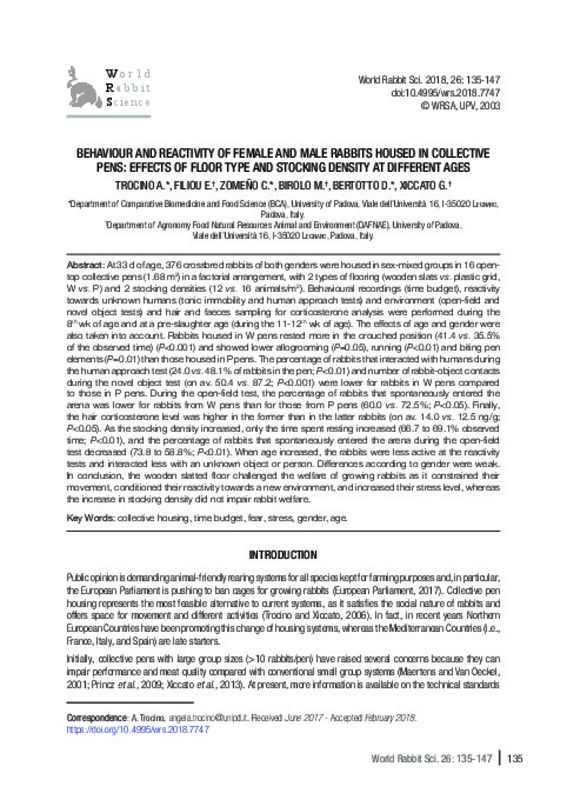JavaScript is disabled for your browser. Some features of this site may not work without it.
Buscar en RiuNet
Listar
Mi cuenta
Estadísticas
Ayuda RiuNet
Admin. UPV
Behaviour and reactivity of female and male rabbits housed in collective pens: effects of floor type and stocking density at different ages
Mostrar el registro completo del ítem
Trocino, A.; Filiou, E.; Zomeño, C.; Birolo, M.; Bertotto, D.; Xiccato, G. (2018). Behaviour and reactivity of female and male rabbits housed in collective pens: effects of floor type and stocking density at different ages. World Rabbit Science. 26(2):135-147. https://doi.org/10.4995/wrs.2018.7747
Por favor, use este identificador para citar o enlazar este ítem: http://hdl.handle.net/10251/104848
Ficheros en el ítem
Metadatos del ítem
| Título: | Behaviour and reactivity of female and male rabbits housed in collective pens: effects of floor type and stocking density at different ages | |
| Autor: | Trocino, Angela Filiou, Eirini Birolo, Marco Bertotto, Daniela Xiccato, Gerolamo | |
| Fecha difusión: |
|
|
| Resumen: |
[EN] At 33 d of age, 376 crossbred rabbits of both genders were housed in sex-mixed groups in 16 open-top collective pens (1.68 m2) in a factorial arrangement, with 2 types of flooring (wooden slats vs. plastic grid, W vs. ...[+]
|
|
| Palabras clave: |
|
|
| Derechos de uso: | Reserva de todos los derechos | |
| Fuente: |
|
|
| DOI: |
|
|
| Editorial: |
|
|
| Versión del editor: | https://doi.org/10.4995/wrs.2018.7747 | |
| Código del Proyecto: |
|
|
| Agradecimientos: |
This work was supported by the Seventh Framework Programme of the European Commission [grant number 600376, CUP C91J13001170006]. The authors wish to thank Dr. Andrea Zuffellato (AIA S.p.A., Italy) for his technical support ...[+]
|
|
| Tipo: |
|









